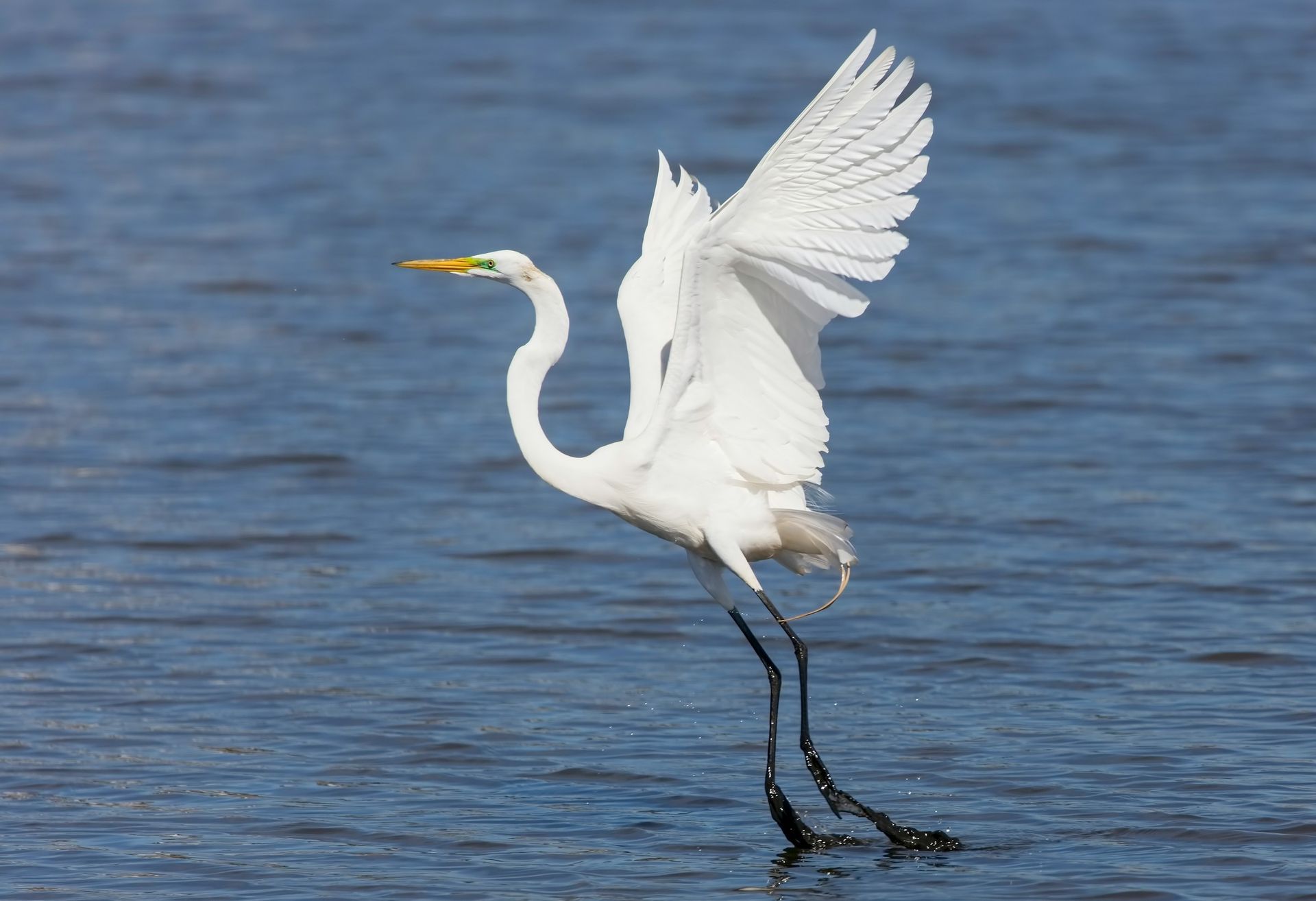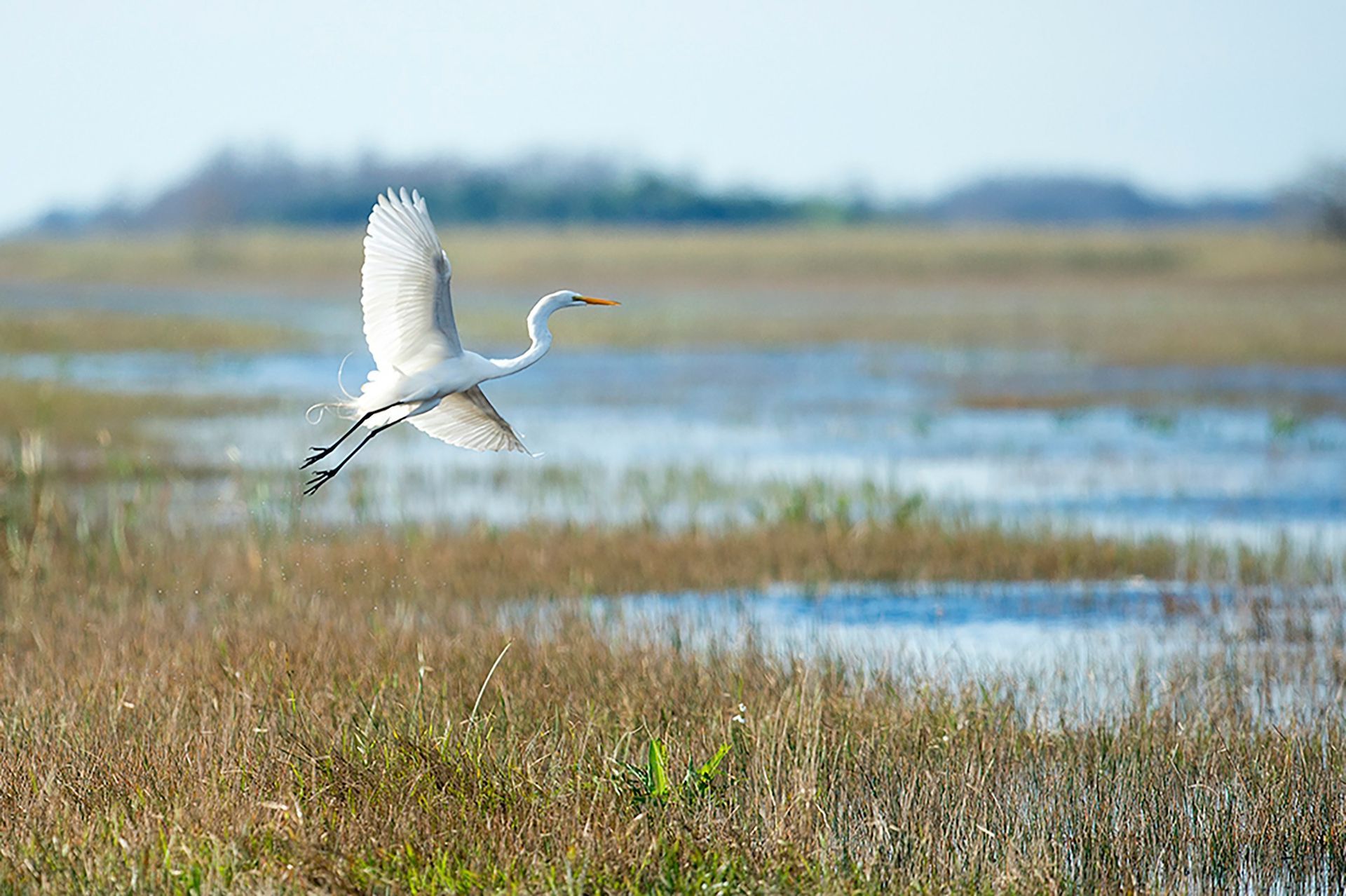Egrets are graceful wading birds known for their striking white plumage, long legs, and sharp beaks, which they use to hunt fish, amphibians, and small invertebrates in shallow waters. Found across the globe in wetlands, marshes, and coastal areas, egrets play a vital role in aquatic ecosystems by controlling fish populations and helping maintain the balance of aquatic habitats.
Most egrets measure between 20-40 inches in height, with wingspans ranging from 36 to 55 inches, depending on the species. Their long necks and sharp beaks allow for precise hunting, while their broad wings enable elegant, soaring flight. Egrets build nests in colonies, often in trees or shrubs near water, with both parents participating in raising the young.
Natural predators include raccoons, foxes, and large birds of prey. Human-related threats, such as habitat destruction and water pollution, significantly impact their populations. Despite these challenges, egrets have shown remarkable adaptability and continue to thrive in areas with protected wetlands.

For your safety and the well-being of wildlife, please observe animals from a distance and avoid touching or disturbing them. If you encounter an animal that appears injured or in distress, contact a licensed wildlife rescue organization for guidance before intervening.
Found An Animal? Not sure how to help a wild animal in need? Learn when to step in, who to call, and how to help safely.
Did You Know?
- Egrets have specialized neck vertebrae that allow them to strike with lightning-fast speed when catching prey.
- During courtship, egrets display elaborate plumage and perform graceful dances to attract mates.
- Their long toes help them walk easily through muddy or sandy environments without sinking.
- Egrets often follow large animals, like cattle, to catch insects stirred up by their movement.
- The Snowy Egret was nearly hunted to extinction in the late 19th century for its decorative feathers.
- Egrets have excellent vision, allowing them to hunt even at dusk and dawn.
- They are opportunistic feeders and will eat anything from fish to small reptiles.
- Unlike many other birds, egrets often stand still for long periods while hunting, waiting for prey to come close.
- Egrets communicate with a range of vocalizations, especially during breeding season.
Problems Faced In The Wild
- Habitat Loss: Wetland drainage and urban development reduce critical feeding and nesting areas.
- Water Pollution: Contaminants can affect prey availability and harm egret populations.
- Climate Change: Altered weather patterns impact wetland ecosystems and prey abundance.
- Human Disturbance: Recreational activities in wetland areas can disrupt nesting and feeding.
- Fishing Gear Entanglement: Discarded fishing lines and nets pose significant risks.
- Predation: Eggs and chicks are vulnerable to predators like raccoons and foxes.
Tips For Cohabitation
- Preserve Wetlands: Support conservation efforts to protect and restore natural water habitats.
- Avoid Disturbing Nesting Sites: Keep a safe distance from colonies during breeding season.
- Reduce Water Pollution: Minimize the use of chemicals and fertilizers that can contaminate waterways.
- Dispose of Fishing Gear Properly: Prevent entanglement by keeping fishing areas clean.
- Plant Native Vegetation: Create natural buffers around ponds and wetlands.



